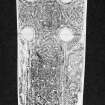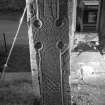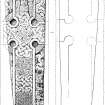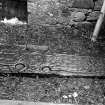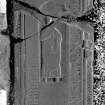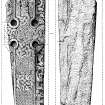Pricing Change
New pricing for orders of material from this site will come into place shortly. Charges for supply of digital images, digitisation on demand, prints and licensing will be altered.
Upcoming Maintenance
Please be advised that this website will undergo scheduled maintenance on the following dates:
Thursday, 9 January: 11:00 AM - 3:00 PM
Thursday, 23 January: 11:00 AM - 3:00 PM
Thursday, 30 January: 11:00 AM - 3:00 PM
During these times, some functionality such as image purchasing may be temporarily unavailable. We apologise for any inconvenience this may cause.
Ardchattan Priory
Cross Slab (Early Medieval)
Site Name Ardchattan Priory
Classification Cross Slab (Early Medieval)
Alternative Name(s) Ardchattan Priory Church; Ardchattan House
Canmore ID 318536
Site Number NM93SE 1.01
NGR NM 97099 34911
NGR Description Centred on NM 97099 34911
Datum OSGB36 - NGR
Permalink http://canmore.org.uk/site/318536
- Council Argyll And Bute
- Parish Ardchattan And Muckairn (Argyll And Bute)
- Former Region Strathclyde
- Former District Argyll And Bute
- Former County Argyll
Field Visit (August 1971)
Leaning against the N wall of the Campbell of Lochnell aisle there is a cross-decorated stone designed to stand upright in the ground. It was presumably brought to Ardchattan from some nearby Early Christian burial-ground, and all four edges of the stone have been trimmed down, possibly to adapt it for re-use as a coffin lid. At present it measures 2·0 m high, 0·68 m wide at the top, 0·55 m wide at the bottom, and from 0·10 m to 0·13 m thick.
On the front (Fig. 99) there is a wheel-cross with rounded and sunken arm-pits, the arcs of the wheel being embellished with Z-fret pattern. On the upper arm is the (? winged) figure of a man holding a book, with the head of a monster on either side; his hair is elaborately curled and his legs merge into triple-ribbon interlacing which also fills the surviving portions of the side-arms and the upper part of the shaft. The interlacing bifurcates in places, in Norse style, and occasionally incorporates rows of pellets. The rest of the cross is decorated with spiral patterns, a plaited knot, and a diagonal key-pattern. The carving to the left of the cross has been largely destroyed, but traces of an animal can be seen beside the upper arm. The spaces to the right of the cross are occupied by several strange beasts, and by a vertical row of three ecclesiastics, one of whom plays a harp and another a pipe, while the third is holding what appears to be a crown. At the foot there is the figure of a warrior holding a spear and a rectangular notched shield.
On the back of the slab are traces of the incised outline of a cross of similar size and shape to the one on the front.
RCAHMS 1975, visited August 1971
Measured Survey (1971)
Measured survey of the cross-decorated stone. Redrawn in ink and published at the reduced scale of 1:15 (RCAHMS 1975, fig. 99)
Reference (2001)
Valliscaulian priory founded about 1230 on a site with no recorded Early Christian associations.
(1) Cross-slab, trimmed on both sides, 2.0m by 0.68m. On face (a) is a ringed cross with round sunken armpits, whose ring bears a fret-pattern. In the top arm is a winged figure holding a book, between two beasts' heads. His legs merge into triple-beaded interlace which fills the cross-arms and is linked to a central triple-spiral roundel. The interlace bifurcates in places and incorporates rows of pellets, perhaps representing animals' teeth. The shaft contains linked spirals, an interlace knot, and a diagonal key-pattern. The left side is damaged, but to the right are beasts and three seated hooded figures playing harp, triple-pipe, and ?trumpet, and at the foot a warrior with spear and rectangular notched shield. These may represent David with musicians and David the warrior. On the back (b) are traces of an outline cross of similar size and shape.
I Fisher 2001.

























